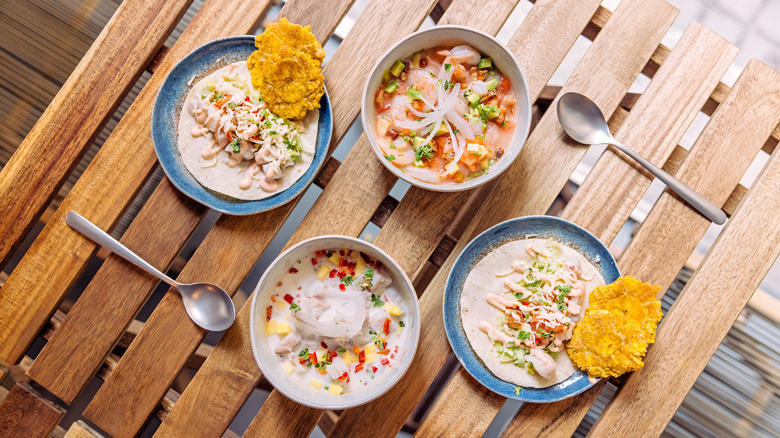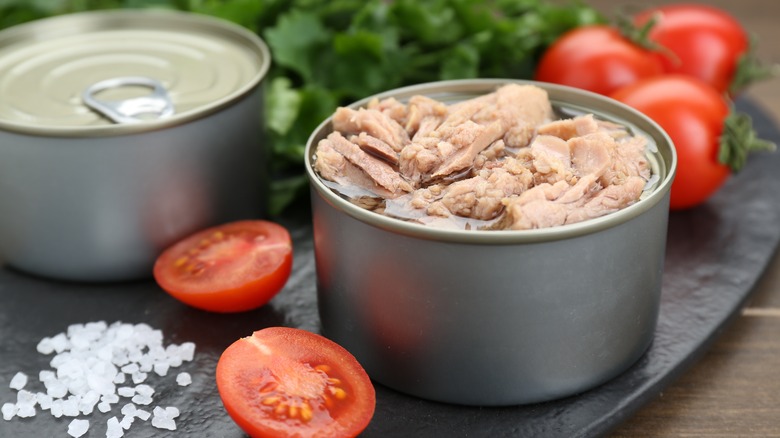Canned Tuna Is Your Secret To The Ultimate Hassle-Free Ceviche
Although they're frequently subjected to unjust criticism, many canned foods are just as toothsome as their fresh counterparts, including tuna. Whether it's a heaping bowl of tuna salad or seafood fritters, a can of this fatty fish is as versatile as it is tasty. Beyond the obvious uses for canned tuna lie numerous culinary possibilities and creations that, despite their convenience, can impress your dinner guests with flavors worthy of Michelin-star dining. Enter canned tuna ceviche.
Ceviche is a seafood dish with regional variations found in Latin American countries such as Peru, Mexico, and El Salvador that's "cooked" in citrus juice through a process called denaturation, which alters the proteins in the fish and gives it a firm, ready-to-eat texture. In addition to the fish, the ceviche frequently features produce such as tomatoes, cucumbers, corn, and avocado to give it a garden-fresh taste. Although it's a refreshing, satiating, and zippy meal, it's not exactly quick to make. Between chopping the produce, preparing the fish, and the 25 minutes it takes to marinate the fish for safe consumption, fresh ceviche can be a hassle. By using canned tuna, you eliminate the need to skin, devein, and clean fish. Plus, because tuna is ready to eat straight out of the can, you don't need to let it sit in citrus juice to cook.
If you're worried that canned tuna doesn't hold a candle to the fresh stuff, set your anxieties aside. Canned tuna is still teeming with the protein, vitamins, minerals, and micronutrients found in its fresh form.
Selecting the best can of tuna
Before preparing canned tuna ceviche, it's essential to select the best variety, just as you would with fresh fish. Keep a few basic tips in mind to get the most freshness and flavor out of your easy-to-make, on-the-fly ceviche.
Canned tuna can be high in sodium, which can leave ceviche tainted with a brackish, overwhelmingly salty taste. Plus, consuming excessive sodium over time can contribute to cardiovascular issues. Opt for low-sodium canned tuna when making ceviche, and add your own salt to taste. To preserve the light and juicy texture of ceviche, opt for tuna canned in water rather than oil. Tuna packed in oil can be too fatty and may alter the delicate consistency of the dish.
Although tuna is perfectly safe to eat in a well-balanced diet, there are some concerns over mercury toxicity with frequent consumption. To keep your mind at ease when eating tuna, specifically canned varieties, the U.S. Food and Drug Administration says skipjack is the safest selection for preventing mercury toxicity.
Although ceviche is just one of the many ways to upgrade canned tuna, it's one of the most delicious, time-saving, and full-flavored hacks of all. Trust us, your taste buds (and dinner guests) will thank you.

